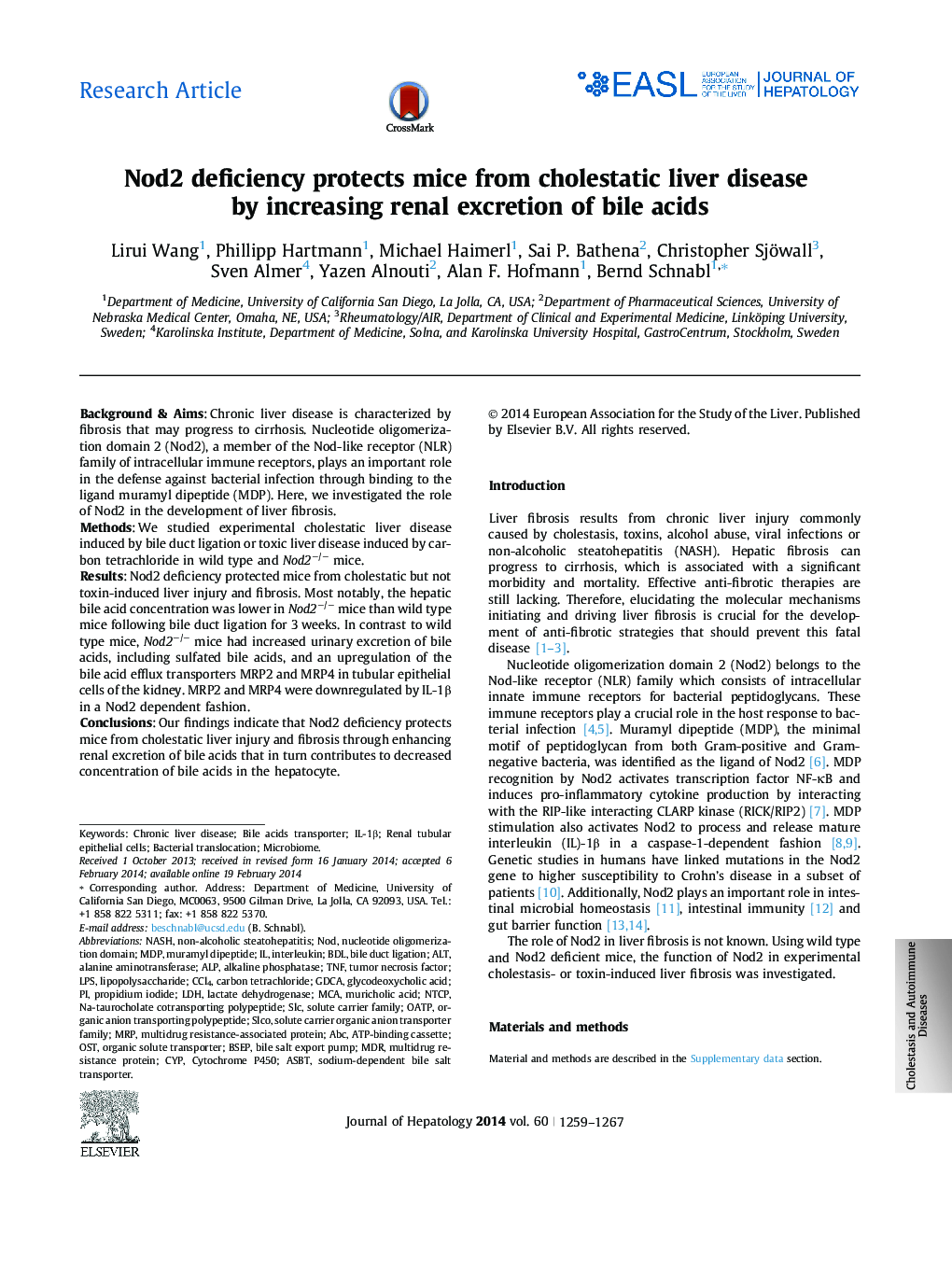| کد مقاله | کد نشریه | سال انتشار | مقاله انگلیسی | نسخه تمام متن |
|---|---|---|---|---|
| 6103914 | 1590326 | 2014 | 9 صفحه PDF | دانلود رایگان |

Background & AimsChronic liver disease is characterized by fibrosis that may progress to cirrhosis. Nucleotide oligomerization domain 2 (Nod2), a member of the Nod-like receptor (NLR) family of intracellular immune receptors, plays an important role in the defense against bacterial infection through binding to the ligand muramyl dipeptide (MDP). Here, we investigated the role of Nod2 in the development of liver fibrosis.MethodsWe studied experimental cholestatic liver disease induced by bile duct ligation or toxic liver disease induced by carbon tetrachloride in wild type and Nod2â/â mice.ResultsNod2 deficiency protected mice from cholestatic but not toxin-induced liver injury and fibrosis. Most notably, the hepatic bile acid concentration was lower in Nod2â/â mice than wild type mice following bile duct ligation for 3 weeks. In contrast to wild type mice, Nod2â/â mice had increased urinary excretion of bile acids, including sulfated bile acids, and an upregulation of the bile acid efflux transporters MRP2 and MRP4 in tubular epithelial cells of the kidney. MRP2 and MRP4 were downregulated by IL-1β in a Nod2 dependent fashion.ConclusionsOur findings indicate that Nod2 deficiency protects mice from cholestatic liver injury and fibrosis through enhancing renal excretion of bile acids that in turn contributes to decreased concentration of bile acids in the hepatocyte.
Journal: Journal of Hepatology - Volume 60, Issue 6, June 2014, Pages 1259-1267